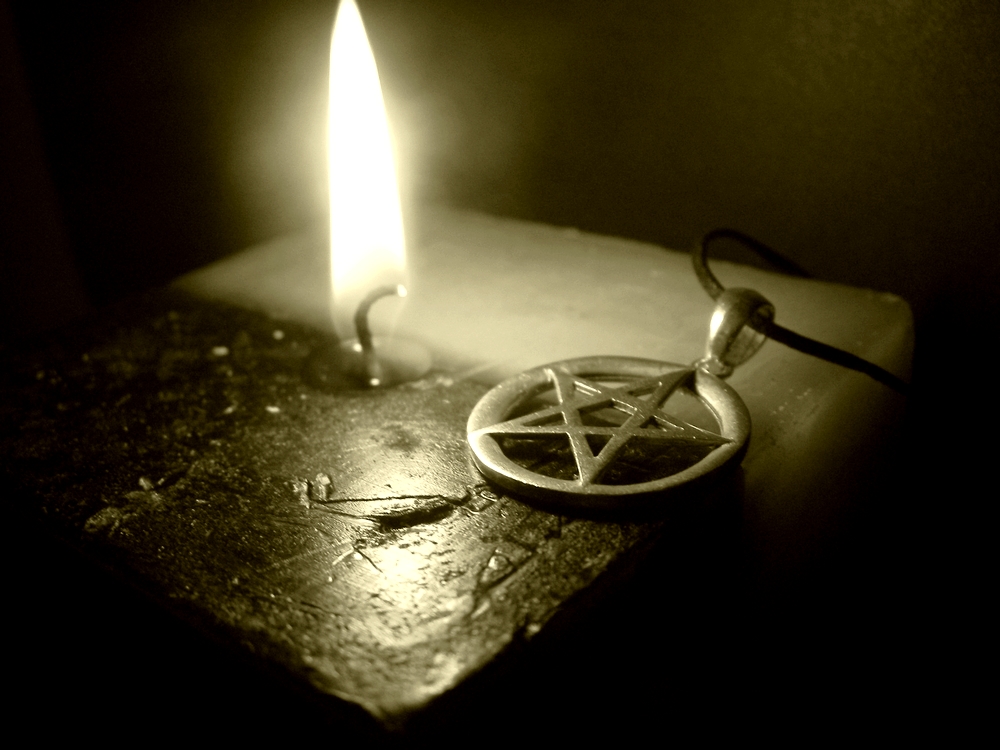Litha – Summer Solstice (20th – 23rd June)
If you are new to the traditions of the Litha celebration, or just looking for ways to enhance your existing practices, this post is for you! In this article, we will discuss different ways to celebrate Litha and honor the energy and magic of this special day.
About Litha
Also called: Feast of Saint John the Baptist, Summer Solstice, St. John’s Feast Day, Jāņi, Enyovden, Līþa/ Lithe, Midsommar, Ivan Kupala Day, Juhannus, Mittumaari, Alban Hefin, Gŵyl Ganol yr Haf, Sankthans, Joninės, Jaanipäev, Keskikesä
Litha, also known as the summer solstice, is a time of great celebration for many pagan and Wiccan communities around the world. This holiday marks the longest day of the year and the beginning of the summer season. It is a time to bask in the warmth of the sun, give thanks for the abundance of nature, and celebrate the power of life and fertility.
The Wheel of the Year – The Goddess is now full and pregnant with a Child, and the Sun God is at the height of His virility.
Until now the God and Goddess have ruled supreme, they have imposed their will upon the kingdom without challenge, but now a somber figure makes his appearance. This is the beginning of the ancient pagan theme of the battle between the brothers; the light and dark kings now begin their conflict. The Dark King attempts to overpower the Queen; the child she bears represents the realm. They fight, light against dark, but at this time the sun is still at the height of his powers, and the King drives the challenger back. In his struggle, he overthrows the usurper, but is wounded, and his strength begins to decline. The light still rules supreme, but a shadow has fallen over the kingdom. The God and Goddess remain at the height of their power, yet a new force – darkness – is awakening in the world.
When is the summer solstice?
Litha (Summer Solstice): June 20
Midsummer is the period of time in the middle of the summer. The exact dates vary among different cultures but is primarily held close to the summer solstice. The celebration predates Christianity and existed under different names and traditions around the world.
At the summer solstice, the Sun travels the longest path through the sky, and that day, therefore, has the most daylight. When the summer solstice happens in the Northern Hemisphere, the North Pole is tilted about 23.4° (23°27´) toward the Sun.
5 Ways to Celebrate Litha
Midsummer celebrations are interwoven with mysticism and magic. It is a time when both are believed to be at the height of their powers. Tradition states that ghosts can cross from the afterlife to this world and, as in Shakespeare’s A Midsummer Night’s Dream, it is thought that the fairy world is close by, bringing mischief and chaos to us mortals. Flower crowns are traditionally worn to ward off the more malevolent spirits.
1) Create a ritual or ceremony:
One of the most common ways to celebrate Litha is to hold a ritual or ceremony that honors the energy of the day. This can be done alone or with a group, and can include elements such as lighting candles, casting a circle, offering prayers and blessings, and making offerings to the gods and goddesses associated with this time of year.
Quite simply, an easy way to connect with the day, is to read some pagan prayers, or make your own seasonal oil, and I will provide a few recipes for that below.
- Bonfire’s representing the Sun, were lit to rouse love, purification, health, and fertility.
- Some witches believe that this day is the best for working magick.
- Tradition has it that on this day the Little People could be seen more easily than at other times.
- It is believed that the veils between the worlds, (like at Samhain,) are thinnest and the spirits of the dead pass through freely.
- Tradition has it, that if you accidentally step on a St. Johns Wort flower on Midsummer night, you would be transported to the realm of the Fey.
2) Connect with nature:
The summer solstice is a time of heightened energy and vitality in the natural world. Take this opportunity to get outside and connect with the beauty and power of nature. Go for a hike, spend time in a garden or park, or simply sit outside and soak up the sun.
You may also choose to create an outdoor altar or sacred space to honor the spirits of the land and the elements. Consider the trees that are around you and include them in your Ritual. I must say that don’t worry about the traditional northern European trees having exceptional importance, because you need to get in touch with the trees that are connected to you and where you live.
- The oak tree is at the center of midsummer celebrations. The Celtic word for oak, duir, means doorway, and oak, as the King of the Forest, is seen as a doorway to both the mystical realms and the new, darker cycle of the year that is about to begin.
- Mistletoe, long believed to have healing and fertility powers, is thought to harness the soul of the tree and be at its strongest when it grows on oaks at midsummer.
- The beech tree, brightening the forest with its fresh lime green leaves, is seen as the Queen of the Forest and consort to the oak king. To the druids, it symbolized ancient wisdom and it was the sacred wood of the summer solstice. In folklore, it is believed that if you write a wish on a beech twig, then bury it, your wish will come true as the twig decays.
- Hazel trees are believed to have magical properties and to protect against evil spirits. They were a symbol of fertility in medieval times. Stirring jam with a hazel twig is thought to stop those mischievous fairies from stealing it!
3) Prepare seasonal foods and drinks:
Litha is a time to celebrate the abundance of the summer season and the harvest to come. Incorporating traditional seasonal foods into your celebration is a great way to honor this energy. Some examples of seasonal foods include berries, cherries, melons, and other fresh fruits, as well as grilled meats and vegetables. You may also choose to prepare or enjoy seasonal drinks, such as lemonade, iced tea, or fruit-infused water.
4) Perform a sun ritual:
The summer solstice is all about celebrating the power and warmth of the sun. Performing a ritual or ceremony that honors this energy can be a powerful way to connect with the magic of this season. You may choose to meditate or visualize the energy of the sun, or engage in a ritual that involves honoring the sun as a deity.
Many people stay up on Midsummer’s Eve to welcome the sun as it rises. Modern druids still famously gather at Stonehenge.
5) Host a gathering or party:
Finally, Litha is a time of celebration and community. Consider hosting a gathering or party to celebrate with friends and loved ones. This can include activities such as bonfires, dancing, singing, and other forms of merrymaking. You may also choose to incorporate other Litha traditions, such as creating flower crowns, performing divination rituals, or making herbal remedies and potions.
According to Ceisiwr Serith, in his book The Pagan Family, European traditions celebrated this time of year by setting large wheels on fire and then rolling them down a hill into a body of water.
The people of pagan Europe would light bonfires and dance all night on Midsummer’s Eve, accompanied by rituals led by druids. Customs included bonfire jumping, with the highest jump believed to predict the height of the year’s crop.
In ancient China, the summer solstice was an important festival when workers were given the day off to celebrate. Ceremonies honored the earth and the feminine force known as yin. Similarly, the ancient Romans’ celebrations focused on Vesta, the goddess of the hearth, home, and family.

Traditions and Symbols of Midsummer
The Bonfire
Traditionally people stayed up all night on Midsummer’s Eve to welcome and watch the sunrise. Bonfires were lit on tops of hills, by holy wells, at places held sacred, to honour the fullness of the Sun. At Litha the bonfire really represents a reflection of the Sun at the peak of its strength. The chosen wood would often be Oak and aromatic herbs were scattered into the fire. People danced around the fires and leap through them. Blazing herbs from the sacred bonfire were used to bless the animals. Blazing torches were carried sunwise around homes and fields. Coals from the Midsummer fire were scattered on fields to ensure a good harvest.
The Oak
Tree worship has always played a large role in Midsummer festivities and trees near wells and fountains were decorated with colored cloths. The Oak King who has ruled the waxing of the year represents strength, courage, and endurance, and the Oak has always been particularly significant at Litha. The Celtic name for Oak is ‘Duir’ which means ‘doorway’ – we are crossing the threshold, entering the doorway into the second, waning part of the year.
Ideas for Your Altar
Oak leaves, oak leaves, and more oak leaves. All the abundance of herbs, flowers, and grasses that are so very available at this time.
This is a shrine to honor the Sun – Sunflowers! If any flower was to be a symbol for the summer solstice it would make sense that it would be the sunflower. “The sunflower is the color of the sun, as well as having petals that look like the sun’s rays. One interesting thing about the sunflower is that it seems to follow the sun.”
Candles in Sun colors. So think yellow, orange, gold.
Herbs common to this festival are St John’s Wort, vervain, rose, lily, lavender, ivy, and fern.
Fresh fruits adorn the altar.
Element – Fire. Fire is symbolic of energy, fun, and passion. All these things can easily symbolize summer and the summer solstice.
Quick Link to Summer Candles:
- Orange Chime Candle 20pk
- Yellow Chime Candle 20pk
- 9inch Yellow Pillar Candle
- 9 inch; Orange Pillar Candle
- Gold Bordered Pentagram Altar Cloth
Litha, Summer Solstice Incense, and Oil Recipes
Directions: Use only a few drops, add to bath water, charm bags, oil burners, incense granules, powder or sticks, anoint candles, crystals, tools and jewelry.
Quick Link to Summer Herbs:
- Chamomile Flower Whole 1oz (Egyptian) (Matricaria)
- Chamomile Oil 1 Ounce
- Vervain Cut 1oz (verbena Hastata)
- Rosemary Leaf Whole 1oz (rosmarinus Officinalis)
- Benzoin Oil 2 Dram
- Benzoin Powder Incense
- Mugwort Cut 1oz (artemisia Vulgaris)
- 1oz Mistletoe Oil
- Mistletoe Cut 1oz (phoradendron Flavescens)
- 2dr Gardenia Oil
- Gardenia Oil 2 Dram
- 1oz Frankincense Oil
- Yarrow Flower 2oz (achilea Millefolium)
Midsummer Incense #1
2 parts Sandalwood
1 part Mugwort
1 part Chamomile
1 part Gardenia Petals
a few drops Rose Oil
a few drops Lavender Oil
a few drops Yarrow Oil
Midsummer Incense #2
3 parts Frankincense
2 parts Benzoin
1 part Dragon’s Blood
1 part Thyme
1 part Rosemary
1 pinch Vervain
a few drops Red Wine
Litha Incense
4 parts myrrh
3 parts frankincense
3 parts oak bark
2 parts witch hazel
Litha Incense
1/2 part mugwort
1/2 part vervain
1 part St. Johnswort
1/2 part frankincense
1/4 part mistletoe
1/4 part bay
Litha Incense
This incense is at its strongest when used for Midsummers spell work and rituals.
With your Mortar and Pestle grind these dried herbs together: wormwood, mugwort, St. Johns wort, yarrow until all are of a powdered consistency then add to charcoal disk for burning when ready to use.
Litha Oil
4 drops lavender
3 drops rosemary
1 drop pine
Use sunflower oil as base
Final thoughts
The summer solstice is a time of great power and magic, and there are many ways to celebrate and honor this energy. Whether you choose to host a ritual or ceremony, connect with nature, prepare seasonal foods, perform a sun ritual, or host a gathering with friends and loved ones, the most important thing is to honor the energy of the day in a way that feels authentic and meaningful to you. By embracing the warmth and vitality of the summer season, we can tap into the abundant energy of the universe and manifest our deepest hopes and dreams.
Happy Litha!
Source:
- From Scott Cunningham’s book “The Complete Book of Incenses, Oils & Brews“
- Lammas Oil and Incense Recipes





